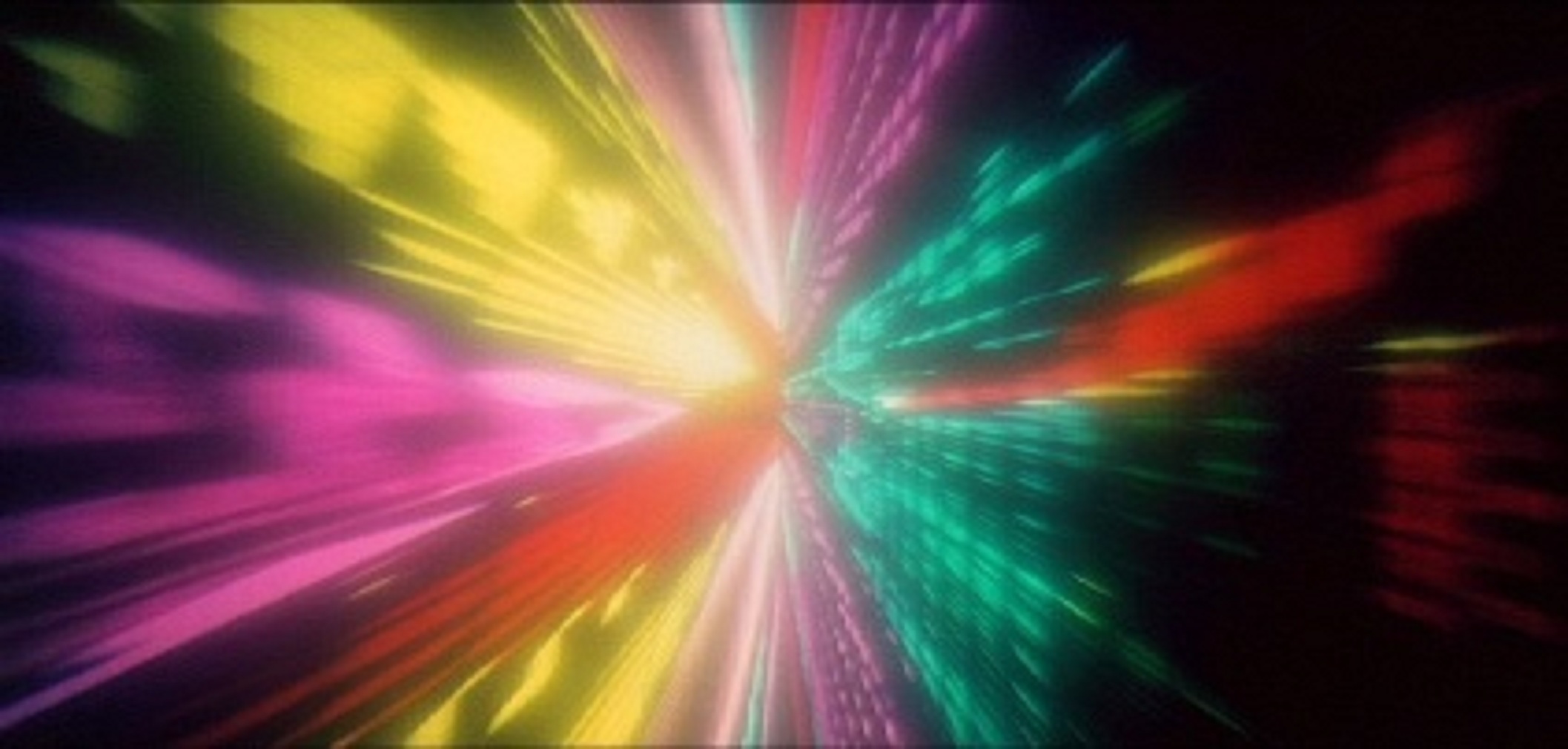
It seems almost impossible to remember a time when computer generated effects did not dominate the movie screen. From Disney’s revolutionary Tron to that first glimpse of a Brontosaurus in Jurassic Park, CGI has become essential to filmmaking. When used correctly, and preferably with moderation, it can create pure magic. Just watch any of the Lord Of The Rings films to see this in action. The key is to use it as another tool in the arsenal, not the end all be all that replaces old school effects.
The truth is, when it comes down to it, filmmakers are just getting lazy.
There is an unprecedented amount of creativity involved in capturing reality on film, even if the intent is pure fantasy. Before the computer, it was the only option. Filmmakers turned to engineers and technicians to devise ingenious ways to get the intended effect. A lot of times this meant tampering with the film itself – through double exposing or splicing – to create otherworldly visions.
Since the advent of CGI, several filmmakers have reverted to old school effects to create scenes that rival anything a computer can create, proving there is still life in old school filmmaking.
Here are 13 of the greatest in camera effects sequences in cinema history.
13. Star Wars – Tatooine
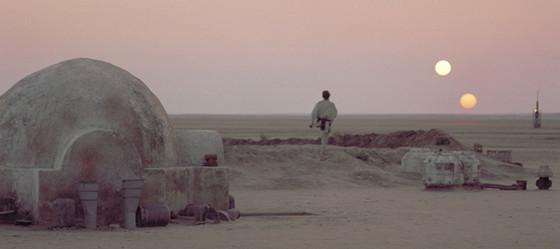
For number thirteen, we need to go all the way back to 1977, before George Lucas tampered with his greatest film. When Star Wars (then just called Star Wars, and not A New Hope) was released, it was filled with some of the best in camera effects ever seen to that point. There are any number of sequences that one could point out as being the best, but for my money, it’s the early sections on Tatooine.
The first thing one notices about Tatooine are the creatures. There are little Jawas, fearsome Sandpeople, and everything in Mos Eisley spaceport. When Lucas went back to doctor his films, one of the first things he did was add digital creatures that truly pale in comparison to the costume work of the original. While all of this creates a truly alien atmosphere, it is the vehicle work on Tatooine that earns this spot on our list.
Two major examples are the Jawas’ Sandcrawler, a massive transport vehicle that carries all the junk that the little creatures collect and then sell. Through the work of clever camera angles and precisely constructed miniatures, you never doubt that the Sandcrawler is a massive vehicle that stands several stories tall.
Another great example is Luke’s Landspeeder. In the film, Luke’s speeder hovers above the ground. In order to create this effect, Lucas had Vaseline smudged on the camera to both hide the wheels underneath and create a kind of haze that could be created by heat of the speeders engine. It is a cheap, novel effect that is entirely believable.
12. Jurassic Park – Escape of the T-Rex
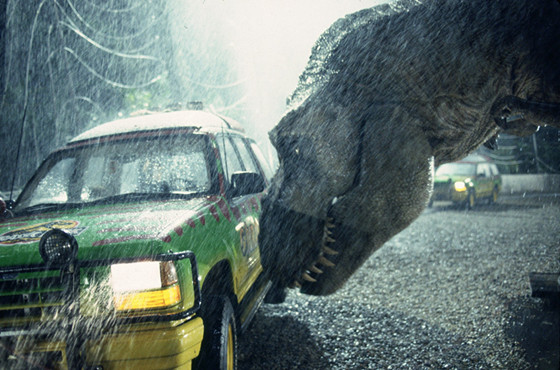
Here’s one to stir up some controversy. Steven Spielberg’s classic Jurassic Park is one of the seminal movies that helped CGI become what it is today. Yet, it was also one of the last great animatronic films to made. Though there are several sequences where animatronics really marvel (such as the birth of the velociraptor), it is the escape of the T-Rex that is truly awe inspiring.
In the film, after the power has been cut and the two observational vehicles are stopped in from of the T-Rex pen, the great beast finally makes an appearance. She breaks free and terrorizes the hapless humans in her path. The scene cuts between CGI and animatronic seamlessly, using CGI for full body movement and animatronic for close-ups and close encounters.
I pick this scene almost entirely for the destruction of the vehicle holding young Tim and Lex. Just witness the T-Rex bearing down on them through the sun roof, or after Dr. Grant as come to the rescue, when the T-Rex is inches away, sniffing them out. It is one of the greatest scenes in history and it’s just actors and animatronics. Real emotion and real terror.
11. Koyaanisqatsi – The Grid
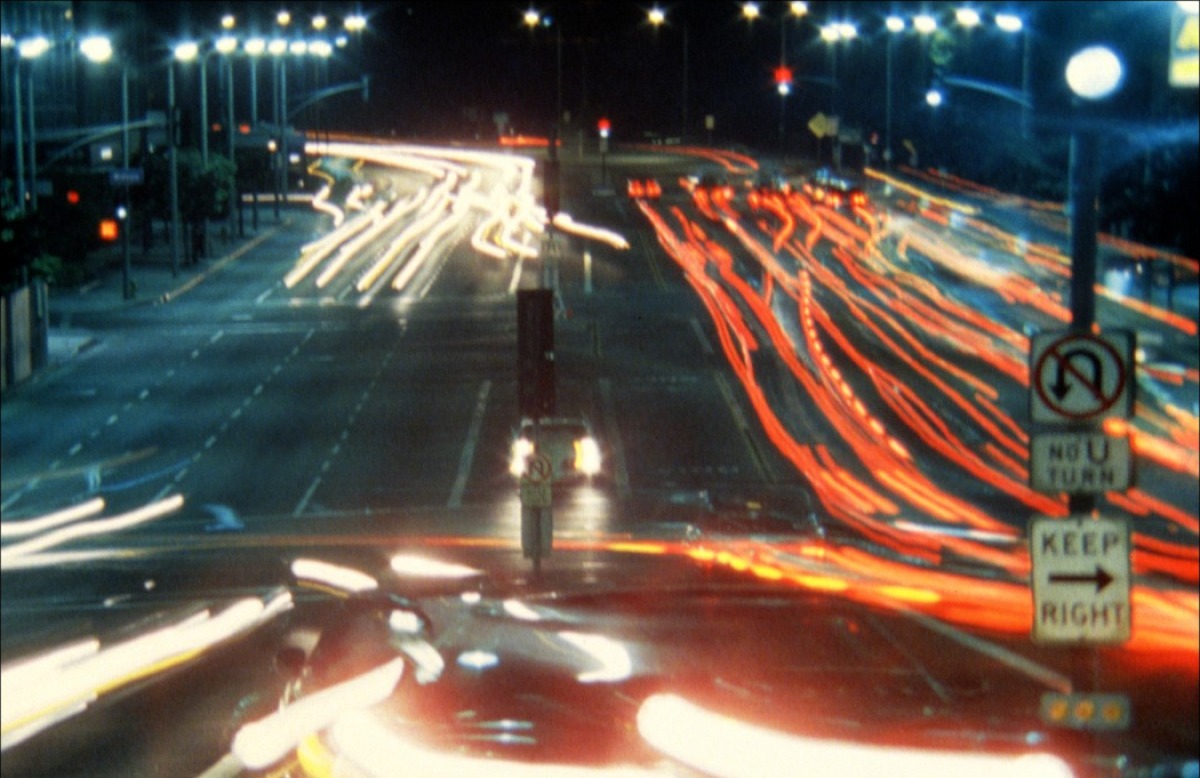
Why no one ever mentions Ron Fricke in the conversation of greatest cinematographers ever is mind boggling. It may have something to do with his slim output, or his avant-garde, documentarian tastes. Yet, the few films he has done are among the most beautiful, photographically flawless works ever created.
Koyaanisqatsi is his seminal collaboration with Godfrey Reggio. It is a sort of visual poem of the world out of sorts. It is separated into segments that deal with different visual themes, such as air, land, and cityscape. Though there is beautiful photography from start to finish, It is when the film enters the city that Fricke’s camera effects truly take hold.
Much of this section, called “The Grid,” is shot in time-lapse, allowing the viewer to see the masses of people and traffic that crisscross our world in a revolutionary matter. We never think about the millions of vehicles that speed along the highways every day until they are flooding across our screens ten times faster than normal speed. Nor do we look at the faces of strangers on the sidewalk, until it is slowed down, forcing us to look.
What effect does this time lapsing achieve? It shows the blur of life…literally.
10. Alien – The Chestburster
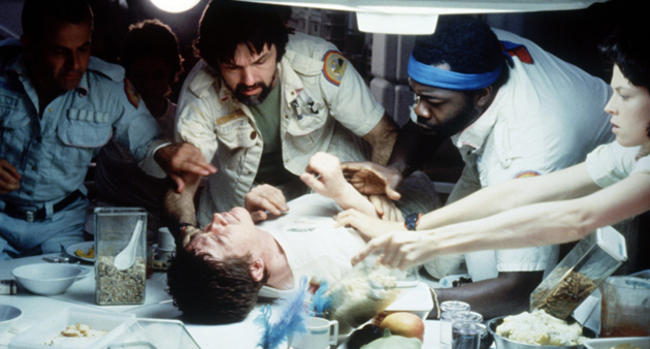
This is just one of those scenes. Everybody knows it. It’s made it’s way so deep into pop culture that it is known by those who have never seen the movie from which it came. The reason for this? It’s one of the greatest effects sequences ever made.
In the film, an astronaut who was attacked by an alien and implanted with its seed, awakens from his coma seemingly normal. The rest of the crew gather around him and begin to eat breakfast. Suddenly, he begins to convulse and, in what most have been quite the shock to those audiences who saw the film on it’s initial run, an alien bursts from his chest.
Director Ridley Scott achieved the effect by having actor John Hurt lie underneath a table, allowing his head and arms to match a full body cast that his special effects crew then thrust the new born alien through. It’s one of the oldest tricks in the book, but Scott’s frantic editing, along with top notch make-up artists and puppeteers, make this particular scene as memorable as it is.
9. Royal Wedding – Fred Astaire dancing on the ceiling
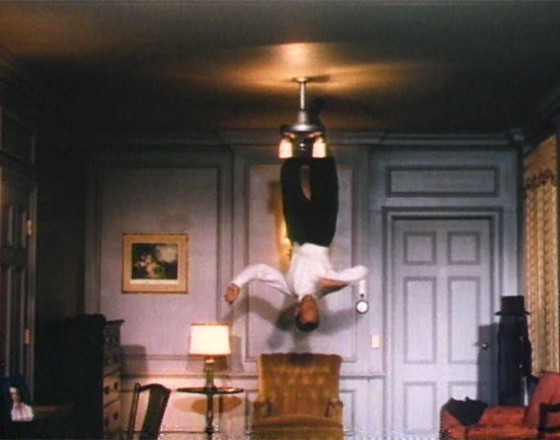
Speaking of scenes that have their own identity separate from the film, this could be one of the most infamous. So much so, that I had never seen the film until I began writing this list. I added it based solely out of reputation. So, I put Royal Wedding in the DVD player the other day and was enchanted. So much so, in fact, that I moved this scene up from number 11 to number 9.
Of course, the sequence is as enjoyable as ever. Stanley Dolan achieved the effect by having his set built in a cylinder so that it could be turned, allowing Astaire to move from the floor to the ceiling. Meanwhile, the camera is anchored to the floor of the set, so that when the set is turned the camera angle never changes. Thus, we see Fred dance on the ceiling!
The thing about this scene is that it has proved to be the inspiration behind several other memorable special effects sequences, including our next pick.
8. A Nightmare On Elm Street – Tina’s death
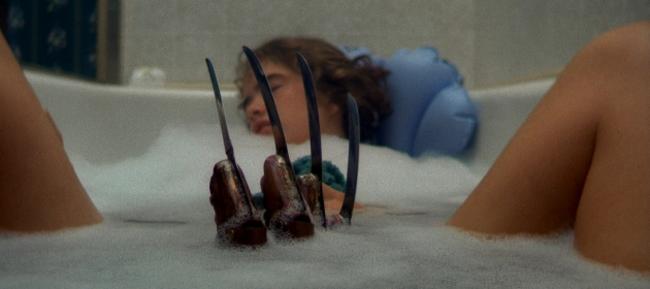
Slasher movies tend to be mainstays of lists like this, and with good reason. The best of them are special effects bonanzas that show ever possibly way in which a person can be disposed of. There are many scenes that could occupy this spot. It could be Kevin Bacon’s death in Friday The 13, or any of Tom Savini’s exploding heads (Dawn Of The Dead, Maniac, The Prowler). But we’re talking about truly impressive scenes, and there is nothing more impressive in the slasher genre then the death of Tina in A Nightmare On Elm Street.
When Tina meets Freddy Kruger in her dreams, she tries to put up a fight but succumbs to his power. Cut to her bedroom where what seems an invisible Freddy begins to molest her in her bed, then slashes her chest and proceeds to drag her on to the CEILING. It’s as if Wes Craven wanted to do the anti Fred Astaire. Where as his ceiling dance in Royal Wedding was joyous, Tina’s is horrifying. Watching her scream for her life while being drug up the walls by seemingly nothing is a harrowing, visceral experience.
Though the succession of campy sequels has dimmed the bite of the original, A Nightmare On Elm Street, and in particular Tina’s death scene, are truly terrifying filmmaking.